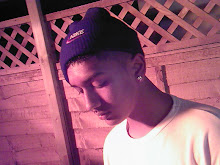Analysis
'Ross Kemp On Gangs'
Narrative: On the show Kemp travels around the world talking to gang members, locals who have been affected by gang violence, and the authorities who are attempting to combat the problem. In each episode he attempts to establish contacts within the gangs who can arrange interviews with the gangs' leaders. - http://en.wikipedia.org/wiki/Ross_Kemp_on_Gangs
Representation: This show represents gangs to be violent and corrupt but it also takes a deeper look into the reason behind the making of the gang, why they do what they do and how this life has effected them physically, mentally and emotionally. Gang members are shown to be aggressive and anti-social and the cities are portrayed as poor, unwealthy places to live.
Conventions: They use a voiceover on the show, interviews and show life how it is no camera edits. Props like guns, knives etc,low key lighting when showing the gangsters. He also wears casual costume and a normal attire, jeans and tshirt that are usually colours like black so he does not offend any gangs with the colours he wears. Not many close up shots except when showing gun wounds etc, generally medium shots or medium close ups, set in various places like; Mexico, many places in LA, Brazil and across Europe.
'http://video.google.com/videoplay?docid=-2020029531334253002
Documentary found on google that examines representations of gender roles in hip-hop and rap music through the lens of filmmaker Byron Hurt, a former college quarterback turned activist. Conceived as a “loving critique” from a self-proclaimed “hip-hop head,” Hurt examines issues of masculinity, sexism, violence and homophobia in today’s hip-hop culture and I will link this to how this can have an effect on today's young, male, teenage deliquency.
Thursday, 4 February 2010
Subscribe to:
Post Comments (Atom)

No comments:
Post a Comment